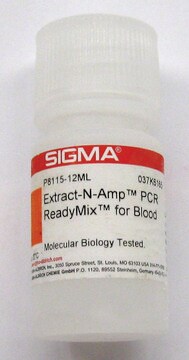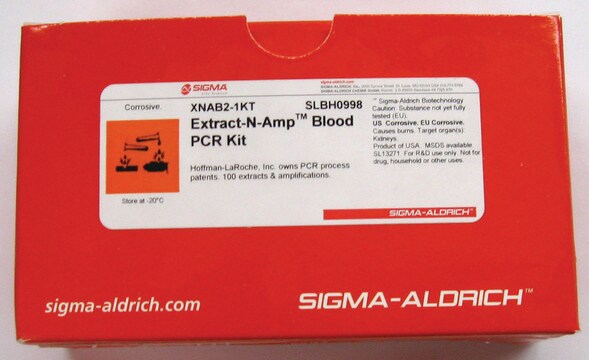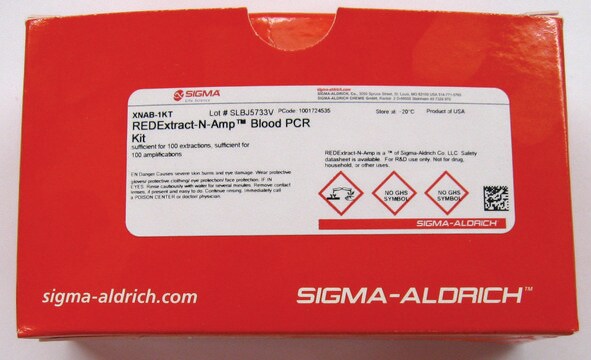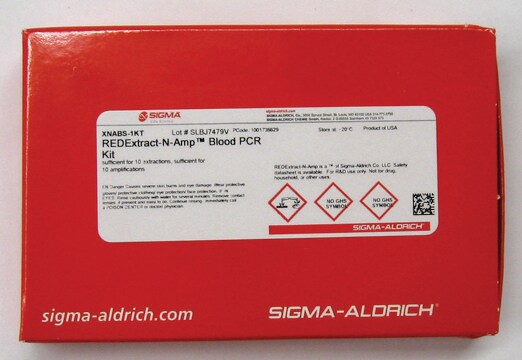XNAB2R
Extract-N-Amp™ Blood PCR Kit
sufficient for 1000 extractions, sufficient for 1000 amplifications
Synonym(s):
Blood direct PCR kit
About This Item
Recommended Products
usage
sufficient for 1000 amplifications
sufficient for 1000 extractions
sufficient for 1000 reactions
feature
dNTPs included
hotstart
technique(s)
PCR: suitable
color
colorless
shipped in
wet ice
storage temp.
−20°C
Looking for similar products? Visit Product Comparison Guide
General description
Application
Features and Benefits
- Efficient 8 minute prep allows greater speed and throughput
- No need for any type of purification, organic extraction, centrifugation or alcohol precipitation
- Simple, 3 step procedure with no special equipment required
- Hot start antibody included for highly specific PCR amplification of genomic DNA
- Compatible with multiple format (single tube or 96-well plate)
- Can be used with whole blood or blood cards
- Extract stable at 4 °C for at least 6 months
Principle
Other Notes
Legal Information
Antibody licensed for in vitro research use under U.S. Patent No. 5,338,671 and 5,587,287, and corresponding patents in other countries.
related product
Storage Class Code
10 - Combustible liquids
Certificates of Analysis (COA)
Search for Certificates of Analysis (COA) by entering the products Lot/Batch Number. Lot and Batch Numbers can be found on a product’s label following the words ‘Lot’ or ‘Batch’.
Already Own This Product?
Find documentation for the products that you have recently purchased in the Document Library.
Articles
The Extract-N-Amp Blood PCR Kits contain all the reagents needed to rapidly extract and amplify human genomic DNA from whole blood, whole blood dried on a blood card, and cultured mammalian cells.
Extract-N-Amp is a versatile, combined DNA extraction and amplification kit intended to simplify the generation of PCR products from a range of sample types. This methodology can be used without modification to perform PCR on blood samples stored on FTA blood cards (Whatman) which removes the need for the laborious and costly washing procedures that the standard FTA protocol stipulates. This technique removes the variability between sample preparations and maximizes the number of PCR reactions that can be performed on individual FTA blood card samples.
The availability of simple methods for purification of DNA and RNA has greatly facilitated the analysis and characterization of the genome and gene expression. There is a demand to isolate DNA and RNA rapidly and conveniently from a variety of cellular sources, including cells and tissues from mammalian, plant and bacterial cultures.
Our team of scientists has experience in all areas of research including Life Science, Material Science, Chemical Synthesis, Chromatography, Analytical and many others.
Contact Technical Service







